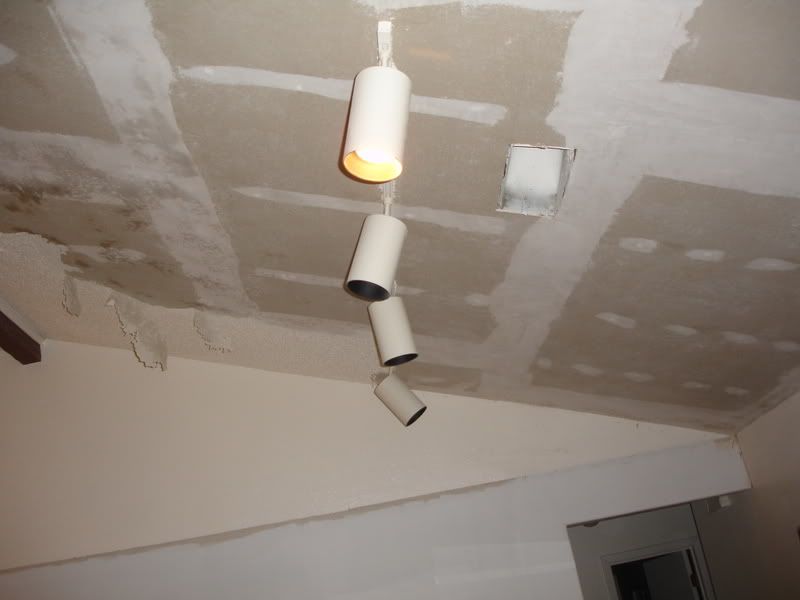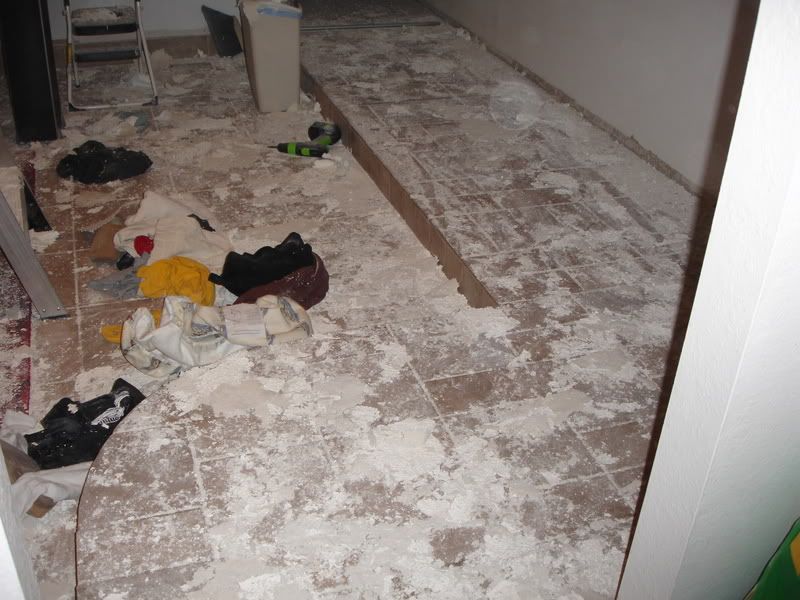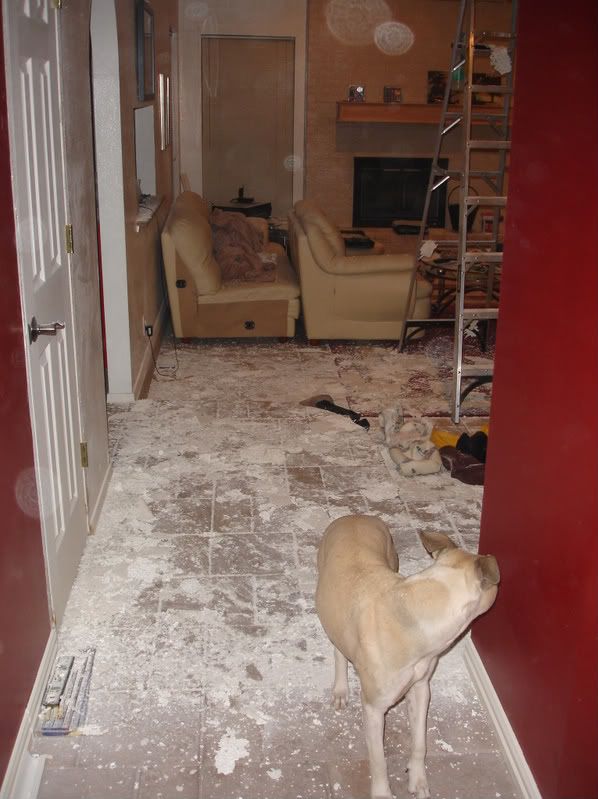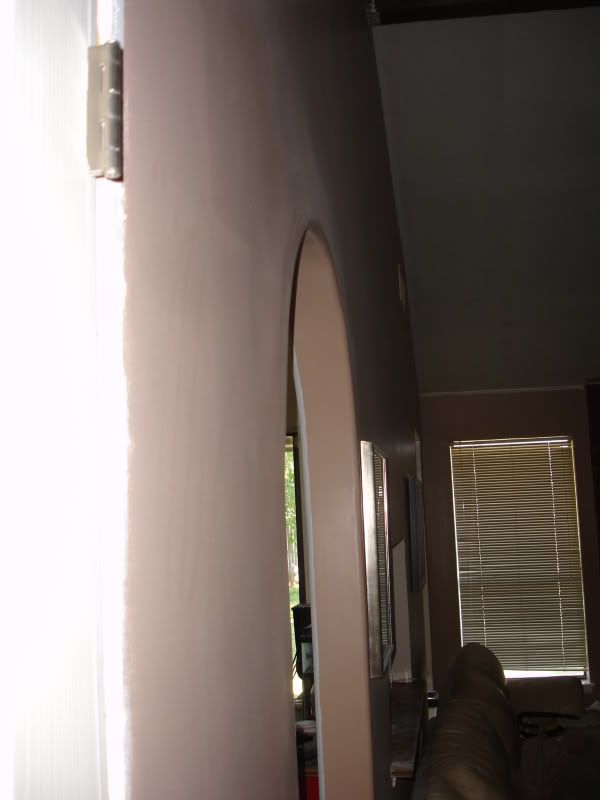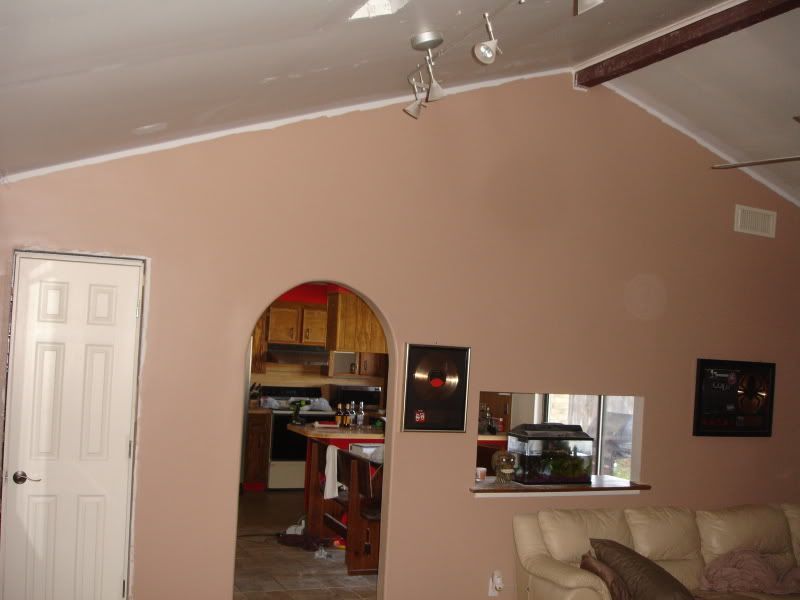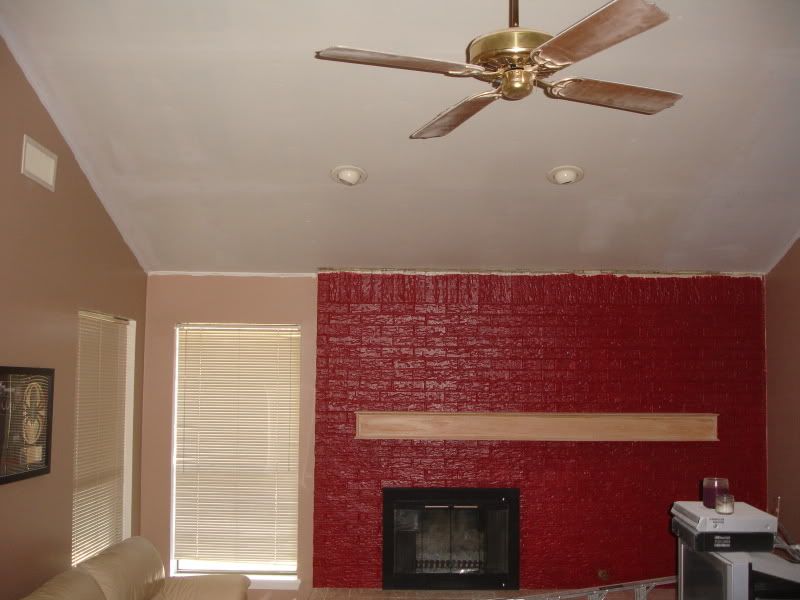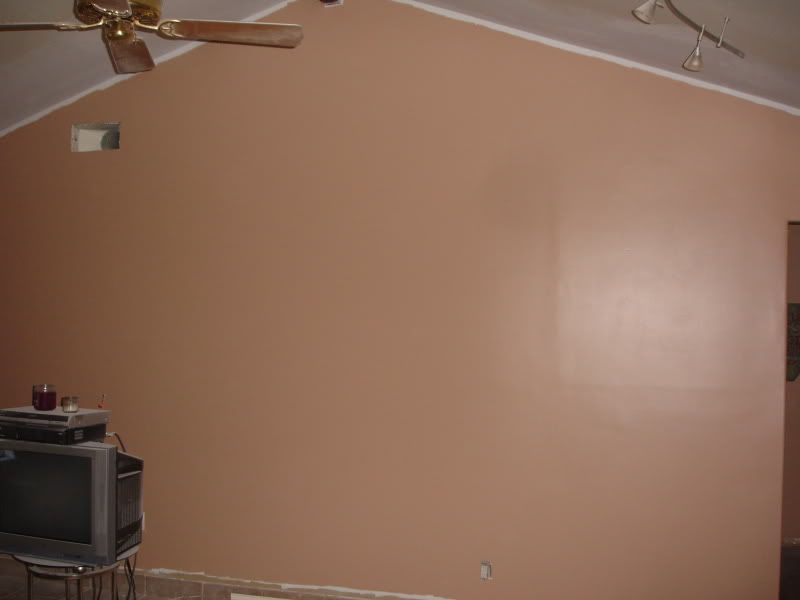NogaroS4:
Here's a few tips that will make your drywall smoother and flatter:
1. If you're buying joint compound in a premix (in a box or pail), don't be scared to thin it with water. I've always used Synko Pro Set 90, which comes as a powder in a bag, so I've always mixed it to a consistancy that was easy to spread. The first time I tried using a pre-mix, I was convinced you needed to have the arms and wrists of a mountain gorilla to use the stuff. The reason the pre-mixed joint compounds are so thick is almost certainly because neither the manufacturer nor the customer wants to pay more for shipping water across the country. The manufacturer knows that you can always thin the stuff yourself, but you can't make it thicker. So, they sell it so that it's almost too thick and stiff you use, and it's up to you to thin it as desired.
I use a kitchen mixer blade set in an electric drill to mix joint compound and you can use the same thing to thin your pre-mix with water. Any place listed under "Appliances, Small" in your yellow pages phone directory will repair kitchen mixers and will save up some old blades for you if you ask politely. Just put your mixing container inside an empty cardboard box beside a pail of water. That way if any joint compound comes flying off the mixer blades as you're mixing, it'll be contained inside the cardboard box. And, you can quickly and easily clean the mixer blade by spinning the blade while submerged in the pail of water. Spin the excess joint compound off the blade by spinning the blade inside the cardboard box, and then clean the rest off by spinning the blade in water.
2. ALWAYS, ALWAYS, ALWAYS apply your joint compound and scrape or sand it down with the aid of a strong light close to the wall or ceiling your working on. The sharp lighting angle exagerates the roughness of the surface, giving you a much better idea of where you have to add and remove material to make the surface smoother. When the surface looks "decent" under such critical lighting, it'll look good under normal lighting. When it looks good under critical lighting, it'll look absolutely perfect under normal lighting.
3. Don't JUST use a sanding screen instead of sandpaper. Go to any place that sells machine shop supplies and ask if they sell Scotchbrite pads (or competitor's equivalent). Machinists use these for polishing metal after machining it. 3M makes the standard green and white Scotchbrite pads you see for sale in grocery stores for scouring pots, but they also make a wide variety of Scotchbrite pads in various sizes, various weaves and with different abrasives impregnated into the nylon fiber the pads are made from for other industrial purposes. You can buy a grey "Ultrafine" pad with a very open weave in a 6 inch by 9 inch size at places that sell machine shop supplies. Slip one of these between the sanding screen and the holder so that the sanding dust goes THROUGH the screen and into the Ultrafine Scotchbrite pad. Cut the pad to size so that the sanding dust falls out the side of the pad when you turn the tool horizontal and tap it gently against the wall. This will greatly increase the speed at which you sand because the dust won't clog the screen.
4. On butt joints, where you don't have a contoured edge on each side of the joint in which to bury your tape, use a "curved trowel". A curved trowel looks (at first glance) like an ordinary 5" X 11" inch plastering trowel. But, when you set it on a flat surface or sight along it's edge, you notice that it arches upward about 1/8 inch in the middle. (that is, the blade is curved kinda like a very slightly bent playing card) Since you hold the trowel at a comfortable angle to the wall when using it, a curved trowel allows you to spread a perfectly smooth and symmetrical "mound" of joint compound over a butt joint that's only about 1/16 inch thick at it's middle. That's way more than you need to bury a strip of fiberglass mesh tape, but it's not nearly enough to cause a visible "bump" in the wall, even with wall mounted light fixtures.
This is a "curved trowel":
Notice how it arches up about 1/8 inch in the middle. This allows you to spread a smooth and symmetric "mound" of joint compound about 1/16 thick at it's middle over a butt joint.
5. If you use premixed joint compound, you'll find the compound comes in three "types":
a) "Regular" or "Taping" joint compound has the most glue in it. It sticks the best to the walls, but also dries the hardest and is therefore the hardest to sand smooth.
b) "Topping" or "Finish" joint compound has the least glue in it. It doesn't stick to the wall as well, but it dries soft and is the easiest to sand smooth.
In a perfect world, a drywalling contractor would use Regular joint compound for taping the joints and filling drywall screw dimples. Then, he'd use Finish joint compound for both subsequent coats to fill in the shrinkage of the first coat and prep the wall for sanding. (I typically just scrape the first two coats down with a putty knife or paint scraper, and save the sanding for the final coat.) However, for small jobs, most contractors will do the whole job with:
c) "All Purpose" joint compound, which has a "medium" amount of glue in it, and is therefore a compromise between Taping and Topping joint compounds. It sticks OK and isn't too hard to sand smooth.
In my humble opinion, instead of buying different pre-mixes for different purposes, it makes more sense to buy a "Finish" joint compound as a powder in a bag, and a gallon of Elmer's white wood glue. Mix some white wood glue into some water, and use that solution to mix your powder. The more glue you put in the water, the better your joint compound will stick, but the harder it will dry. The less glue you put in, the softer and easier to sand it will be.
Once you get used to mixing joint compound from powder, and using white wood glue to modify it for different purposes, you'll find this system better than using different boxes of joint compound for different purposes.











